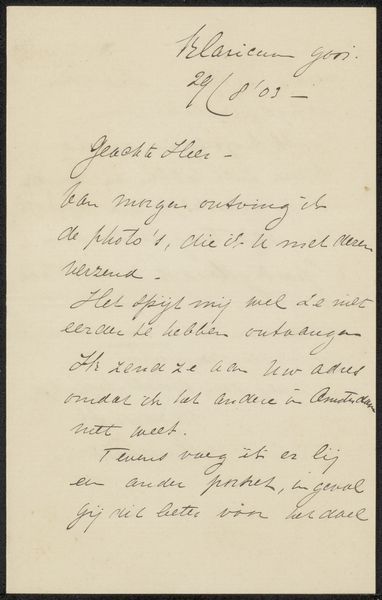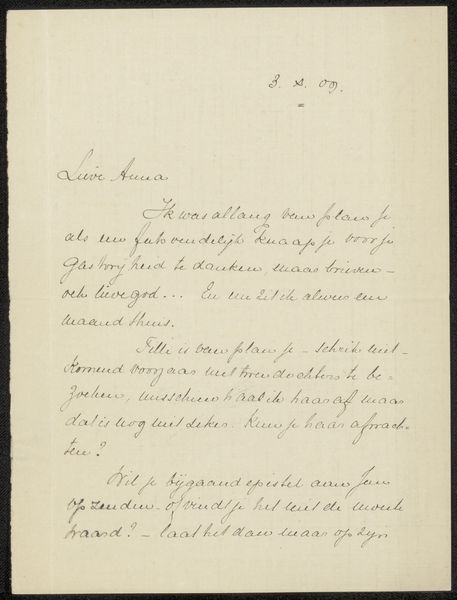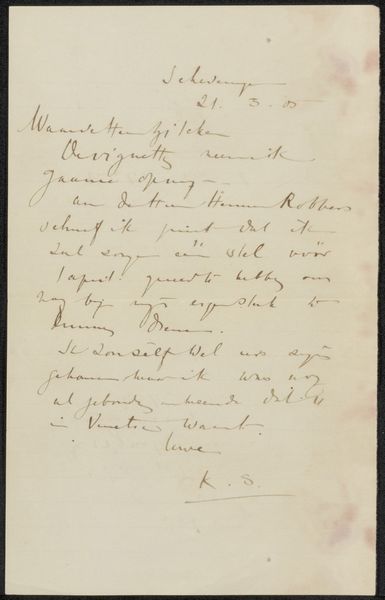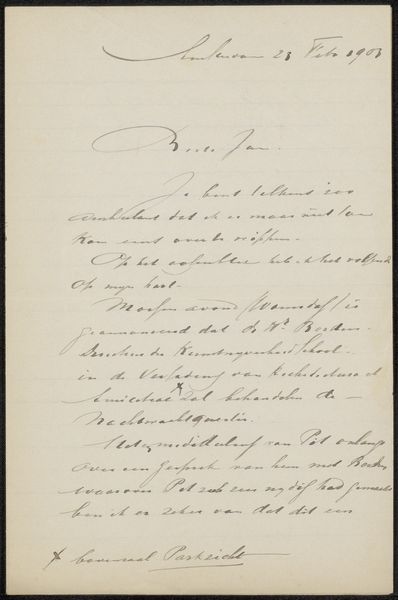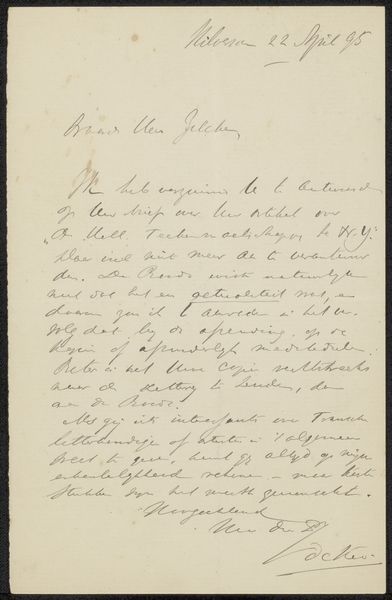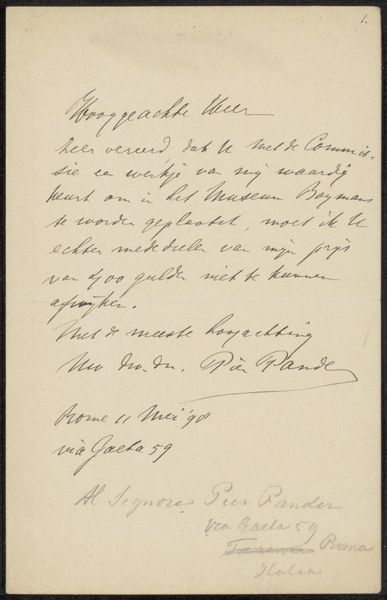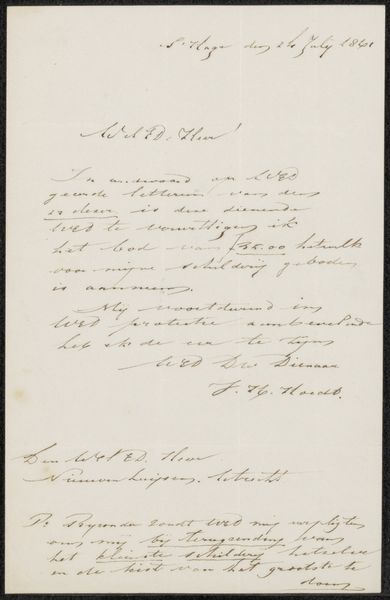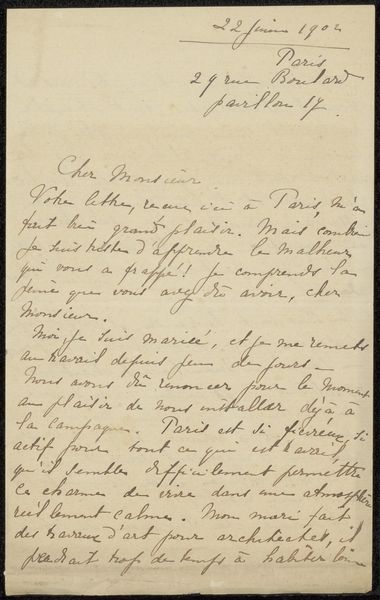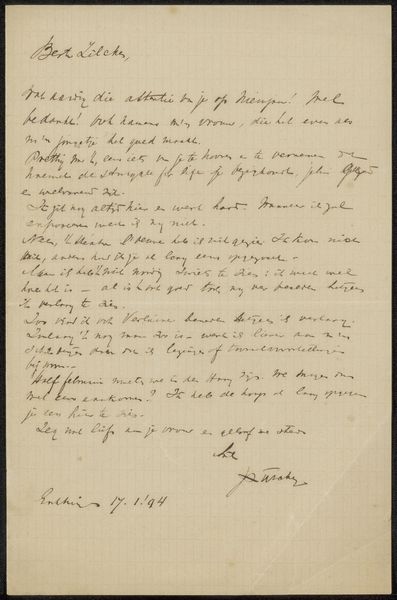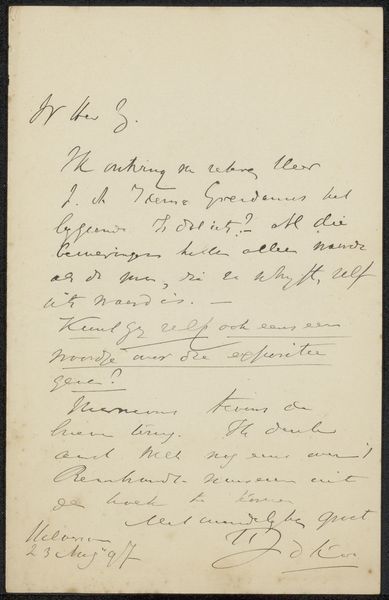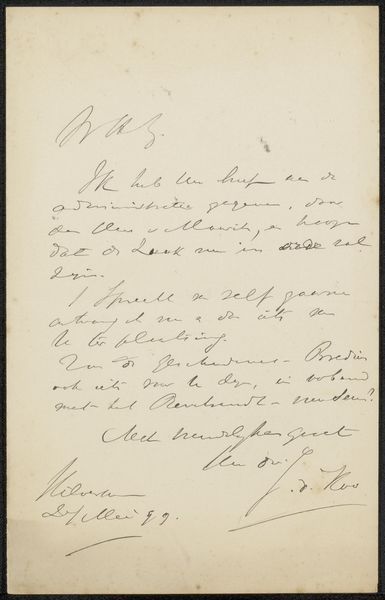
drawing, paper, ink, pen
#
drawing
#
paper
#
ink
#
pen
#
calligraphy
Copyright: Rijks Museum: Open Domain
Curator: Henriëtte de Vries is thought to have composed this letter between 1900 and 1928. It's penned in ink on paper, showcasing her elegant handwriting. Editor: Isn't it fascinating how a simple letter can become art? Look at the swirls and delicate pressure—I'd almost want to blow on the page just to keep those strokes suspended. Curator: Indeed. This particular correspondence, titled "Brief aan Philip Zilcken," highlights the significance of personal networks within the artistic community of the time. Letters were not just communication; they were vital records of artistic dialogue. Editor: Networks, always. So, I'm imagining the recipient—Zilcken—running his fingers across these loops and curves. Did artists then ever see the performative side to letter writing or correspondence? Curator: While explicit acknowledgement of performativity in letters may have been less common then, there was a shared awareness that letters, particularly those written by prominent figures, held potential historical significance. Editor: Like tiny performances documented for future study. There’s so much to decipher here—the immediacy, the care given to each stroke, and what appears to be almost a dance. I mean, writing's hardly an emotionless skill. Curator: It certainly infuses everyday actions with significance. Henriette also appears to inquire after artworks by an 'Hen. Martens', requesting to include said works in some show. And, like now, seems keen on exhibition space for it. Editor: What could have become of this 'exposition', I wonder. Sometimes art history feels a little like trying to solve a lovely, unsolvable mystery—the thrill lies in tracing the faint outlines of the unknown. Curator: I concur entirely. Delving into art's past reminds us that artworks aren't always born from solo genius; they're the results of conversations, requests, debates. And quite often, the product of chance and circumstance. Editor: Makes you wonder about our own digital missives and whether those will endure. Perhaps there's a beauty to be found in tweets and posts yet. Anyway, seeing art as dialogue—yes, that feels much closer to real than some canon of genius.
Comments
No comments
Be the first to comment and join the conversation on the ultimate creative platform.
